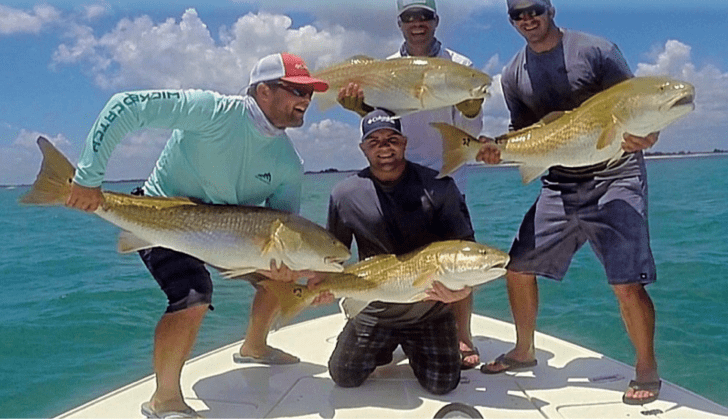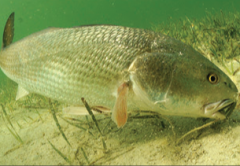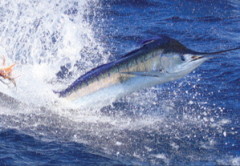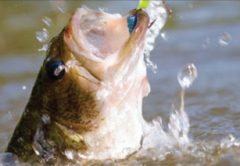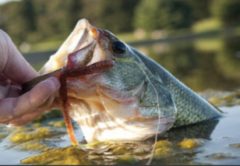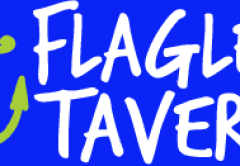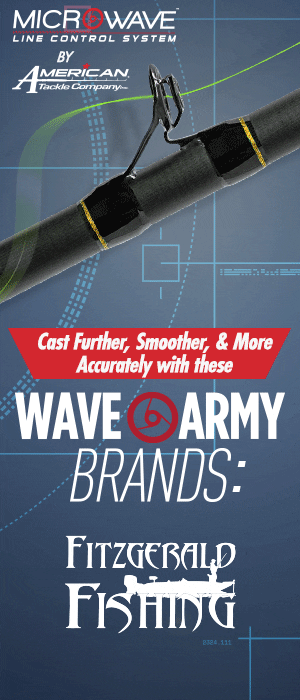If you are a local Central Florida resident and an avid saltwater fisherman, you should be looking forward to the month of May and the beginning of the summer fishing months this year. Growing up in Melbourne along the east coast of Florida’s best in-shore and near-shore fishing, I remember the month of May as the start of summertime and great fishing. I still have lots of memories of the days I spent fishing in my youth and as a young adult. Notice I said fishing not catching – great memories are about the experience and adventure, catching fish was always a plus.
For those of you who are lucky enough to be a part time or annual resident of Central Florida, the time for catching an in-shore or near- shore trophy or memory is here! As the months of May, June, and July arrive along with a more stable weather pattern, so do the species of game fish that our local near shore fishery is famous for; tarpon, snook, redfish, kingfish, huge jacks and sharks, just to name a few. Whether you are on the east coast, west coast or in the Florida Keys, the month of May starts our summer fishing season. As the coastal waters warm and the game fish migrate closer to the inlets or passes from the rivers, creeks, back-waters or deep waters of our oceans, one thing for sure is they will be there, and they will be hungry. Not only will these hard fighting game fish be in our area, and with the right tide they are happy to all types of live, cut or artificial baits when properly presented. Reports of mixed bags of tarpon, kingfish, sharks, jacks, bonita and snook have been coming in from the east coast from Ponce Inlet, down through Port Canaveral and south to Melbourne Beach and Sebastian Inlet.
We start our day heading south out of Port Canaveral after launching at the Port’s launch ramp near Jetty Park. This newer launch point is just inside the mouth of the Port’s idle zone and within a very short boat ride you are able to jump your boat on plane in lieu of a 10-minute idle from the old ramp next to Grill’s restaurant that has been taken over by cruise ships. Look for bait pods as you head south towards the Cocoa Beach Pier or further south toward Patrick Air Force Base in close to the beach just outside the shore break. Once you find a school of pogies by sight or on your fish finder, one or two throws of the cast net and you will have plenty for a day’s fishing. Look for the birds diving or start near the bait schools for active fish. Hook your live bait through the bottom lip then out through the nose with a 7/0 to 9/0 circle hook with at least 50lb to 80lb. fluorocarbon leader and slow troll them keeping your eyes open for rolling tarpon or schools of fish feeding in or around the bait pods.
Tarpon are beginning to show up by now and the local captains mentioned that bait has just moved in from the deeper water to the shore break and the many species that feed on them are nearby. Tarpon in the 100-to-140-pound class is the norm with fish up to 200 pounds not uncommon. Captain Jim Ross and his client fought a fish exceeding the 200-pound mark last season that pulled them up and down the coast last summer for hours dragging his 24ft. bay boat over 5 miles. Jim mentioned it wasn’t the largest tarpon he has hooked but was definitely an epic battle that lucky angler will not soon forget.
There is a huge school of redfish that cruise around near-shore in the summer months outside Port Canaveral known as School-X. These fish in the 30-to-40-pound class will eat just about any offering you put in front of them once you locate them. On several trips over the last few years, we were lucky enough to find this massive school ourselves, thousands of huge redfish that covered any area close to 75 yards square and all were willing to eat anything cast to them. Joining the school were sharks, huge jacks in the 20 plus pound class and several tarpon. Each time we found this school they were just north of Port Canaveral and within less than 2 miles offshore. Having the chance to witness seeing this tremendous school of fish and the sea of copper colored water is something I will never forget. Each time we ran into them we caught several each pass with many double hook-ups of fish over 35lbs. each, getting a photo and releasing them all to fight another day!
If you are looking to catch a one of the many species that are roaming our near-shore waters along central Florida’s Space Coast, the month of May and is the beginning of our summer days that offer many opportunities for catching a memory of your own. You can’t catch them unless you give it a try. As always remember to be safe, watch out for the late afternoon storms that approach rapidly and always wear an approved life vest while offshore with your large outboard motor under power. Take a kid fishing with you over the summer and create a memory for them as well. Good luck and tight lines – I’ll see you out there.


